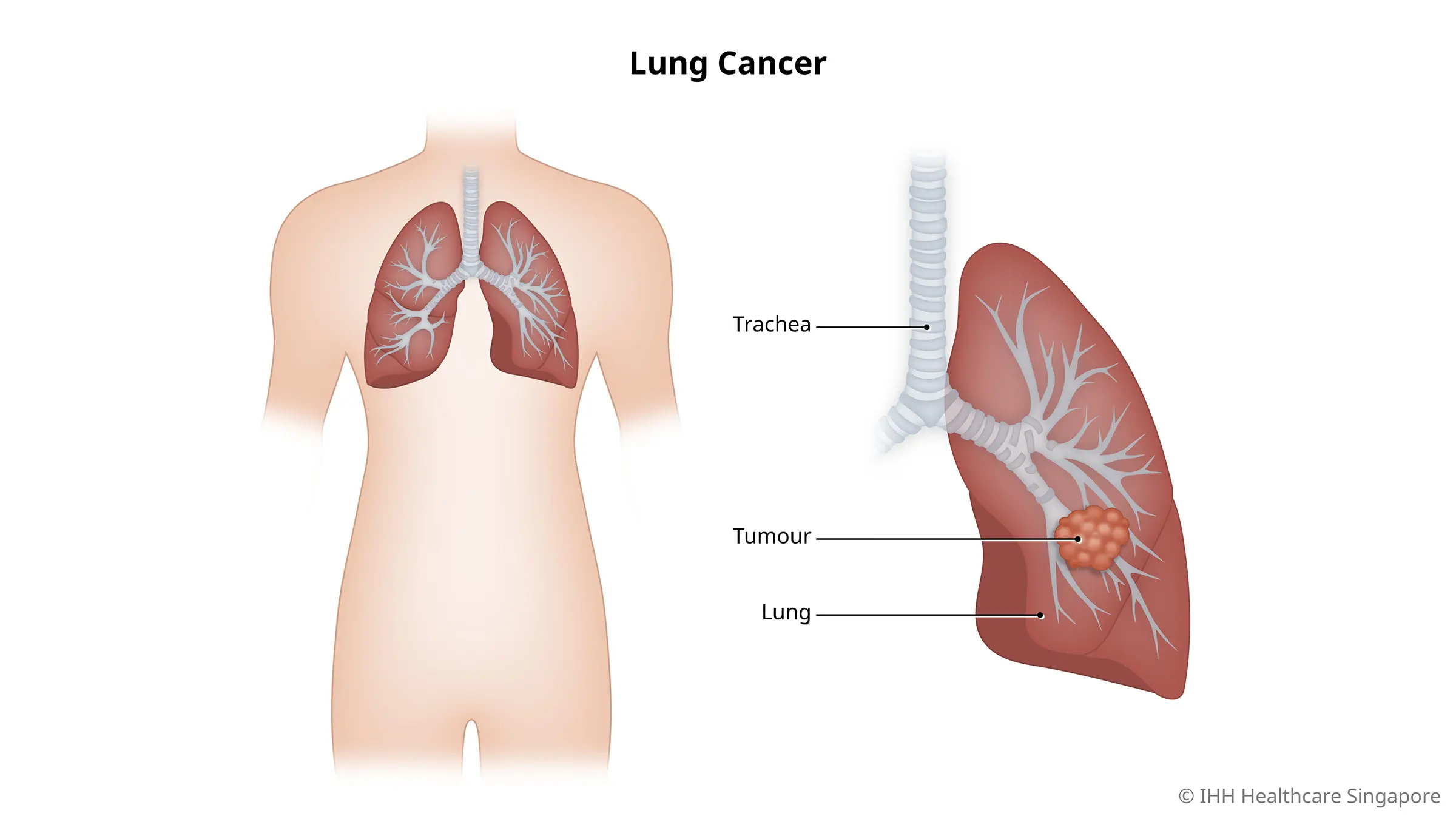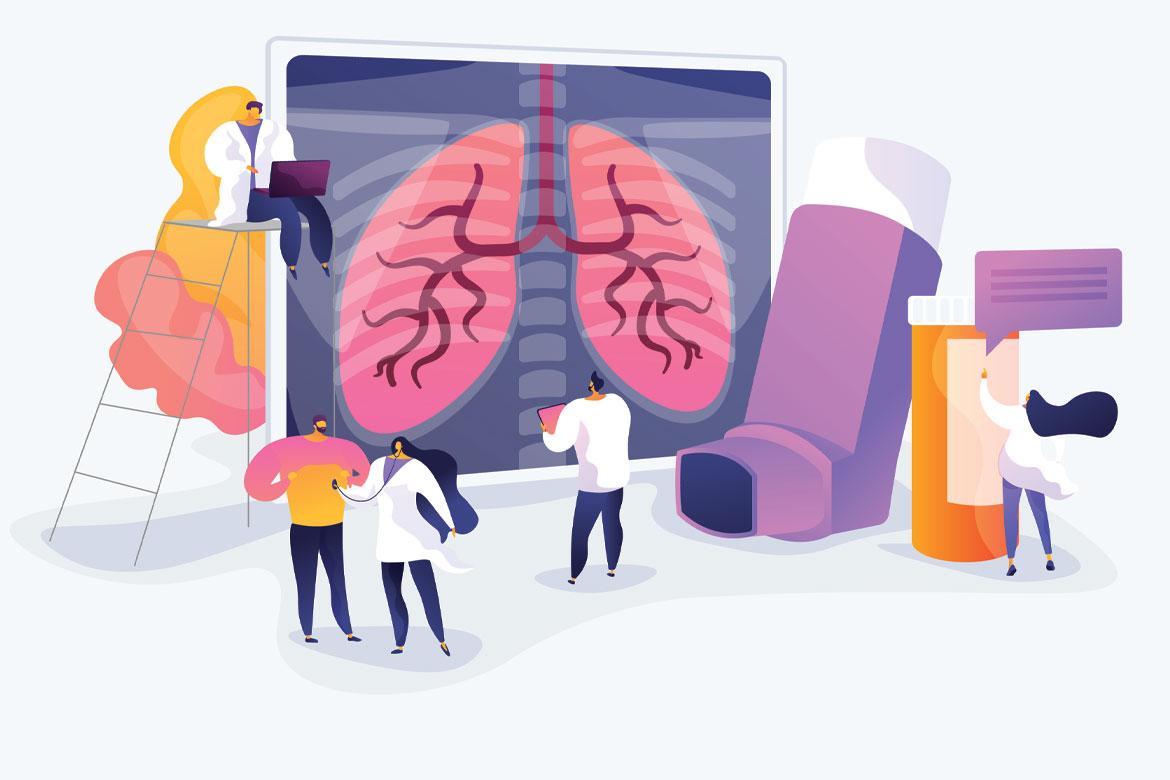-
-
Featured Care Areas

Lung Cancer
What is lung cancer?
Lung cancer is the abnormal growth of tissues in the lungs.
When a person breathes, air goes down the trachea (windpipe) and into the lungs, where it spreads through tubes called bronchi (air passages). Most lung cancers begin in the cells that line these tubes.
Types of lung cancer
There are 2 main types of lung cancer:
- Non-small cell lung cancer is the most common type of lung cancer
- Small cell lung cancer is less common, but spreads quickly to other parts of the body through the blood
What are the symptoms of lung cancer?
Early stage lung cancer often does not cause symptoms. As the cancer grows, the following symptoms may appear:
- A cough that gets worse or does not go away
- Breathing difficulties, such as being short of breath
- Constant chest pain
- Coughing up blood
- A hoarse voice
- Feeling very tired all the time
- Frequent lung infections, such as pneumonia
- Unexplained weight loss
As these symptoms may also be related to other health problems, it is best to consult a doctor if you experience these symptoms to confirm your diagnosis.
What causes lung cancer?
The main cause of lung cancer is tobacco smoke from cigarettes, pipes or cigars.
Harmful substances in tobacco smoke damage the lung cells. Inhaling second-hand smoke from people smoking nearby can also cause lung cancer.
What are the risk factors of lung cancer?
You may be at risk for lung cancer if you:
- Are older than 40 years – Most people are older than 65 years when they are diagnosed with lung cancer
- Have contact with certain substances such as radon (a radioactive gas), asbestos, arsenic, chromium, nickel and air pollution
- Have family members with a history of lung cancer
This page has been reviewed by our medical content reviewers.
SPOTLIGHT
Need help?
For enquiries, please call
+65 6575 7575
For appointment bookings, please WhatsApp
+65 8111 9777








